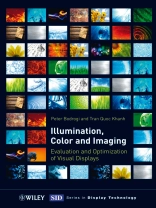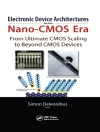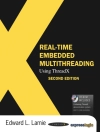This much needed, comprehensive and modern reference on display technology, illumination sources and color imaging focuses on visual effects and how reproduced images are best matched to human visual features.
As such, it teaches readers how to exploit the knowledge of human color information processing to design usable, ergonomic, and pleasing displays or visual environments. The contents describe design principles and methods to optimize self-luminous visual technologies for the human user, including modern still and motion image displays, and indoor light sources. Design principles and methods are derived from the knowledge of the human visual system, with a special emphasis on color vision, color cognition, color harmony, color preference and visually evoked emotions. The expert authors include the most important and latest applications of the design principles and methods, forming a comprehensive view of human color information processing from the receptors through the retina via high-level visual perception right up to the level of cognition, preference, harmony, as well as visually evoked emotions.
This book is included in the Wiley SID Series.
Jadual kandungan
1 Color vision and self-luminous visual technologies
1.1 Colour vision related aspects of modern self-luminant (non-printing) visual technologies
1.1.1 Digital film and TV
1.1.2 Cameras
1.1.3 Colour monitors
1.1.4 Large displays including HMD and projectors
1.1.5 Light sources for indoor illumination and backlighting
1.2 Colour vision features and the optimization of modern self-luminant visual technologies
1.2.1 Photoreceptor structure
1.2.2 Spatial and temporal contrast sensitivity
1.2.3 Colour appearance perception
1.2.4 Colour difference perception
1.2.5 Legibility, visibility and conspicuity of coloured objects
1.2.6 Cognitive, preferred, harmonic and emotional colour
1.2.7 Inter-individual variability of colour vision
1.3 Perceptual, cognitive, and emotional features of the visual system and the corresponding technological challenge
2 Colorimetric and colour appearance based characterization of displays
2.1 Colorimetric and colour appearance based characterization of CRT displays
2.1.1 Modern applications of high-end CRT technology
2.1.2 Tone curve models and phosphor matrices
2.1.3 Measured CRT colour characteristics, s RGB and other characterization models
2.1.4 Additivity and independence of the colour channels
2.1.5 Multi-dimensional phosphor matrices and other methods
2.1.6 Spatial uniformity and spatial independence
2.1.7 Application of CIELAB, CIELUV and CIECAM02 to self-luminant monitors
2.2 Colorimetric and colour appearance based characterization of non-CRT displays
2.2.1 Characterization models of non-CRT displays (PDP, LCD, HMD, projectors)
2.2.2 Viewing direction uniformity
2.2.3 Visual artefacts
2.3 Display light source technologies
2.3.1 Projector light sources
2.3.2 Backlighting light sources
2.3.3 Colour filters, local dimming and high dynamic range imaging
2.4 Colour appearance of large viewing angle displays
2.4.1 Colour appearance differences between small and large colour stimuli
2.4.2 Mathematical modelling of the colour size effect
3 Colour management and image optimization for digital TV and digital cinema
3.1 Colour management workflows for digital TV and digital cinema
3.1.1 Colour management workflows of today?s digital film technology
3.1.2 Application of colour appearance models
3.1.3 Application of colour difference models
3.1.4 Test objects and colorimetric measurement
3.1.5 Colour gamut
3.1.6 Conversion between analogue film and digital film
3.1.7 High dynamic range colour motion picture imaging
3.2 Colour management and colour image processing in digital postproduction
3.2.1 Colour management and image processing in modern film and TV post production
3.2.2 Suitability of colour difference formulae and colour appearance models for the colourist 3.2.3 Differences among proof monitors, analogue cinema and digital cinema
3.2.4 Colour fidelity of monitors and projectors for postproduction
3.2.5 Film-like colour image appearance
3.2.6 Hybrid film projection environments
3.2.6.1 Depth of field, colour and resolution
3.2.6.2 Colour gamut conversion
3.2.6.3 ICC profiles and 3D-LUTs
3.2.6.4 DCI-conform hybrid colour image processing workflows
3.2.6.5 Factors of perceived colour quality
3.3 Exploiting the spatio-temporal characteristics of colour vision for digital TV, cinema and camera
3.3.1 Spatial and temporal optimization of motion pictures
3.3.2 Colour vision and motion picture compression
3.3.2.1 Perceived colour image quality
3.3.2.2 Scalability and loss of visual information
3.3.2.3 Compression efficiency
3.3.2.4 Objective and subjective evaluation of motion image compression
3.3.2.5 Choice of test sequences
3.3.3 Optimization of digital motion picture cameras
3.3.3.1 Optimization of the sensors
3.3.3.2 Optimization of the objective lens
3.3.4 Video watermarking in colour film post-production
3.4 Light sources in TV and film production and postproduction
3.4.1 Optimum spectral power distribution for cinematographic light sources
3.4.2 Colour rendering properties
3.4.3 Colour transformatio
Mengenai Pengarang
Dr. Peter Bodrogi is a senior research fellow at the Laboratory of Lighting Technology of the Technische Universität Darmstadt in Darmstadt, Germany. He graduated in Physics from the Loránd Eötvös University of Budapest, Hungary. He obtained his Ph D degree in Information Technology from the University of Pannonia in Hungary. He has co-authored numerous scientific publications and invented patents about colour vision and self-luminant display technology. He has received several scientific awards including a Research Fellowship of the Alexander von Humboldt Foundation, Germany, and the Walsh-Weston Award, Great Britain. He has been member of several Technical Committees of the International Commission of Illumination (CIE).
Prof. Tran Quoc Khanh is University Professor and Head of the Laboratory of Lighting Technology at the Technische Universität Darmstadt in Darmstadt, Germany. He graduated in Optical Technologies, obtained his Ph D degree in Lighting Engineering, and his degree of lecture qualification (habilitation) for his thesis in Colorimetry and Colour Image Processing from the Technische Universität Ilmenau, Germany. He has gathered industrial experience as a project manager by ARRI Cine Technik in München, Germany. He has been the organizer of the well-known series of international symposia for automotive lighting (ISAL) in Darmstadt, Germany, and is a member of several Technical Committees of the International Commission of Illumination (CIE).












